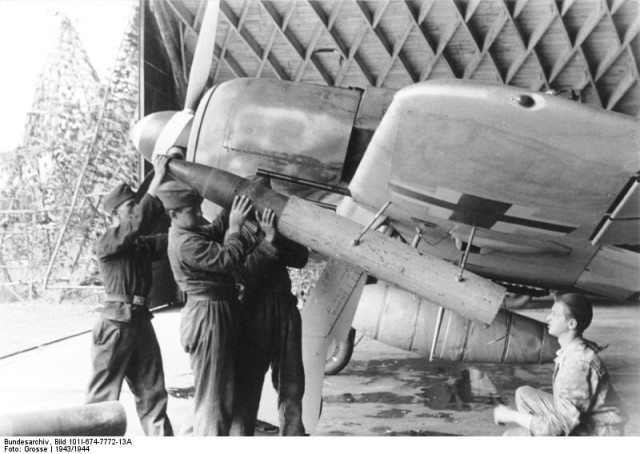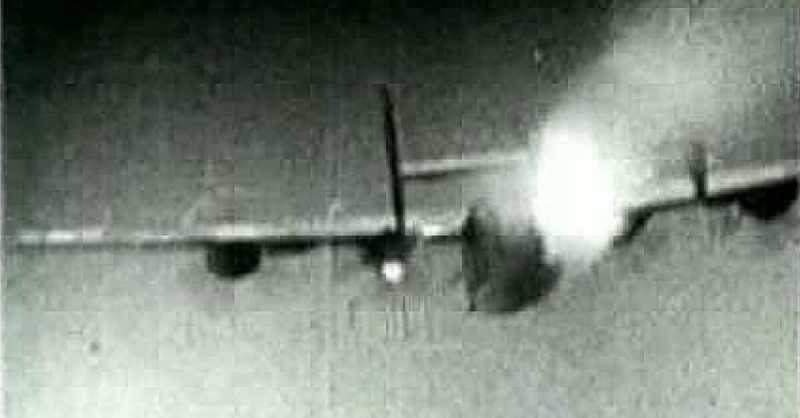In the air war over Europe, by 1944, the Allies had overwhelming advantages in numbers. The Luftwaffe had to come out and attack the bomber formations by day and by night or see its towns, cities and industry destroyed.
Before getting at the bombers, ideally with the twin-engined “Destroyer” heavy fighters meant for such tasks, the Germans had to confront the more numerous American fighters.
The heavily armed Messerschmitt Bf 110 could kill a bomber, particularly those armed with a quartet each of the BR 21 large-calibre air-to-air unguided rockets, but its slower speed made it easy prey for Thunderbolts and Mustangs.

The big, slow twin-engine Junkers Ju 88C, used for bomber destroyer duties in 1942-3 as the American heavy bomber offensive got under way in August 1942, could stand further off and fire its autocannon armament into the tight B-17 formations, but they too were soon hunted down.
The same fate also faced single-engined fighters carrying pairs of the BR 21 rockets each; and the later-used, heavily autocannon-armed models of the Focke-Wulf Fw 190A-8 that replaced the twin-engined “destroyers”.
The Germans began losing one thousand planes a month on the western front (and another 400 on the eastern front).
Despite these losses, in the first 3 months of 1944, the Germans still managed to shoot down almost 800 US heavy bombers and during the summer of 1944 another 900 from the USAAF alone. Not to mention the losses its night fighters were inflicting on the Bomber Command Lancasters and Halifaxes that were bombing Germany at night.
This chilling gun camera footage shows you the bomber formations under attack by the Luftwaffe.
https://www.youtube.com/watch?v=JVxtJULJ0KA
